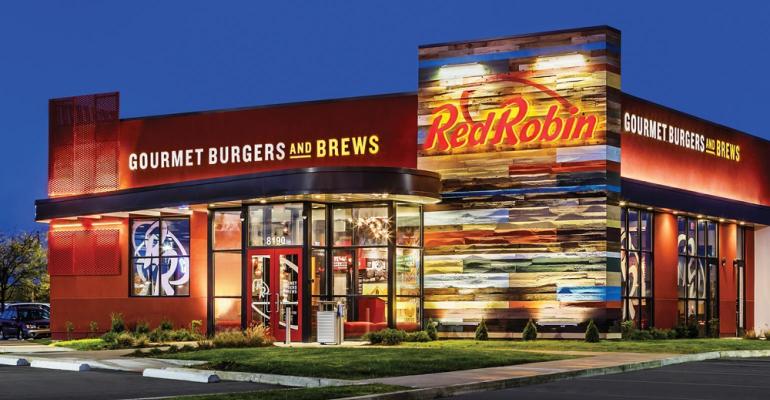Red Robin has made plenty of progress on its five-point “North Star” plan, put into place by CEO GJ Hart late last year to chart the company’s comeback. In Q1, for instance, the chain experienced 700 new sales records, while its guest satisfaction scores improved by 5 percentage points.
That said, the company is only in the second or third inning of this plan, according to CFO Todd Wilson, who spoke Monday at CL King’s 21st annual Best Ideas Conference.
“We have thought of this as a three-to-four-year plan. If you look at the progress in the first year, we’re proud of that. We’ve done some compelling things with our service model, food investments,” he said. “We rolled out flattop grills. But when you look at the journey, we’re recognizing a lot of work has been done but it’s still really early.”
The focal point of these changes is in the product. Red Robin is working to get back to that gourmet burger-feel, and the flattop grills, implemented in Q2, are facilitating progress in doing so. Wilson said the previous cooking system – a conveyor belt – is more representative of QSR than casual dining. In October, more menu changes will be made, including upgraded burger toppings – from the mayonnaise to the pickles to the bacon.
“Most would say flattop grills are the gold standard for a gourmet burger,” he said, adding that even the bacon will be cooked on those new grills. “Today, you get rather thin bacon cooked in a microwave. When we’re on the other side of this, it’ll be thicker, juicer, smokier, cooked on the flattop, which preserves that sweet flavor. We are moving all of our toppings to truly make it a gourmet burger, which is the core of who we are. We think consumers will start to notice.”
The average frequency of a Red Robin guest is about once a year, so there are many who won’t immediately notice these changes, however, which is why the company is also focused on upgrading its loyalty program. The opportunity is massive, as there are currently 13 million members enrolled. About half, are not actively engaged, and the company is moving away from a discount-type program into a rewards-type program to incentivize those consumers back to the brand. Red Robin had tightened some of its marketing spend to reallocate investments toward its five-point plan but is now opening up some investments in the back half of this year with a heavy focus on social, digital and local campaigns.
“There was no reason to market to consumers for an experience we didn’t think was great yet, so we pulled back and used it to fund some other investments. We’re now pleased with our progress, so we kept some powder dry and with that October menu launch, we’ll be much more active and visible and build from there,” Wilson said.
In addition to making ambitious investments, the company is also finding plenty of cost savings to support its plan. Wilson said, for example, the new flattop grills save “a couple of million a year” on reduced labor and maintenance costs. The grills cook the product faster, don’t drip juice like the conveyor belts did, and don’t break down as much.
“The reason we added them is because it delivers a superior product, but we get all those other benefits as well,” Wilson said.
Most of the cost-saving work is coming from the supply chain and therefore won’t impact the guest experience. Wilson said the company has the same products and same portion sizes, for example, but is now receiving a 30-pound case of hamburgers and paying the same price as when it received a 15-pound case of hamburgers. He anticipates such work will help push the company back to its historic restaurant-level operating profits of 18-to-20%. In Q2, they were 12.6%.
“Low-hanging fruit is what we’re going after in year one and two,” Wilson said. “Every time we ask a question or turn over a rock, we generally find an opportunity. It’s encouraging.”
Something else that has been encouraging for the company is its consumers’ resilience. Though there has been some pressure on traffic across the industry, Red Robin has seen no significant evidence of guests managing their (more profitable) dine-in checks; appetizers, desserts and alcohol have all stayed consistent with historical trends. Third-party delivery, however, has declined 12% year-over-year, which is a sign that consumers are managing their budgets overall, Wilson said.
“We are more sensitive to the state of the consumer now than we were six, 12, 18 months ago. That said, we’re encouraged by what we’re doing,” he said. “We’ll be ready to operate whether (2024) is a challenging or positive environment. We’ll have plans to succeed in both.”
Contact Alicia Kelso at [email protected]




